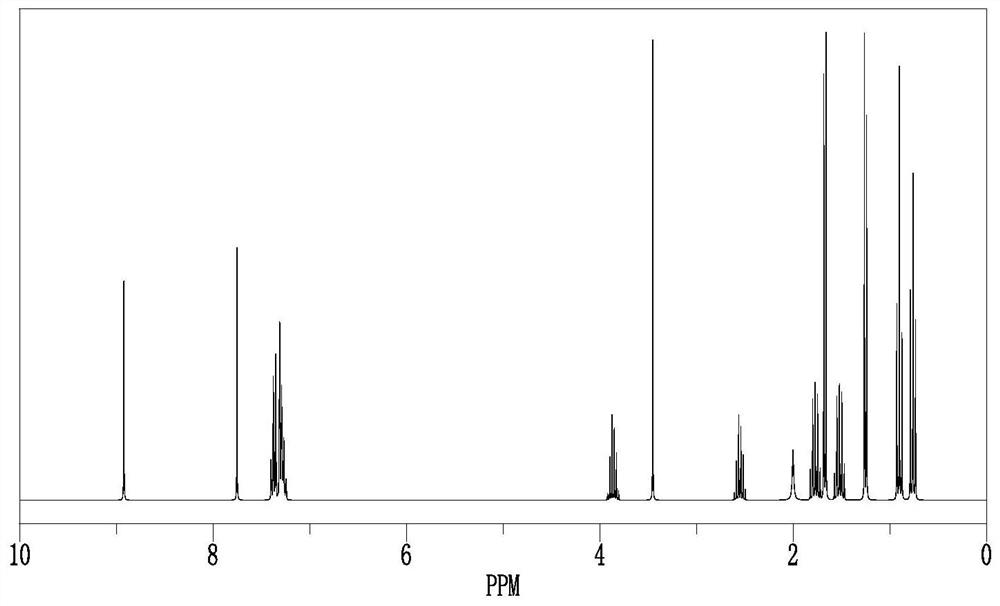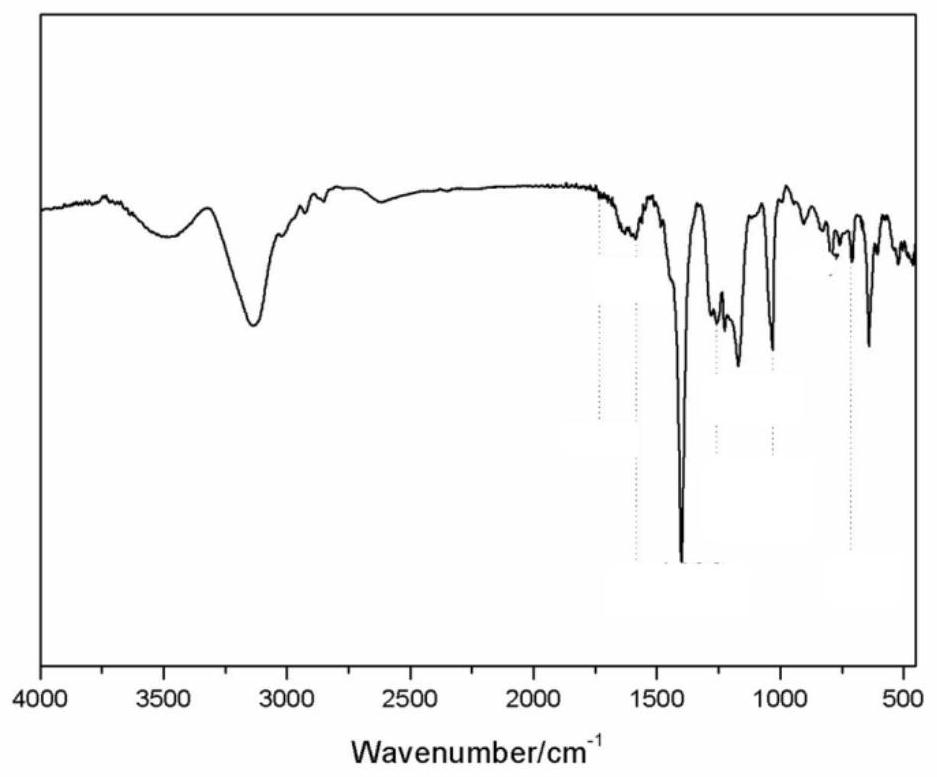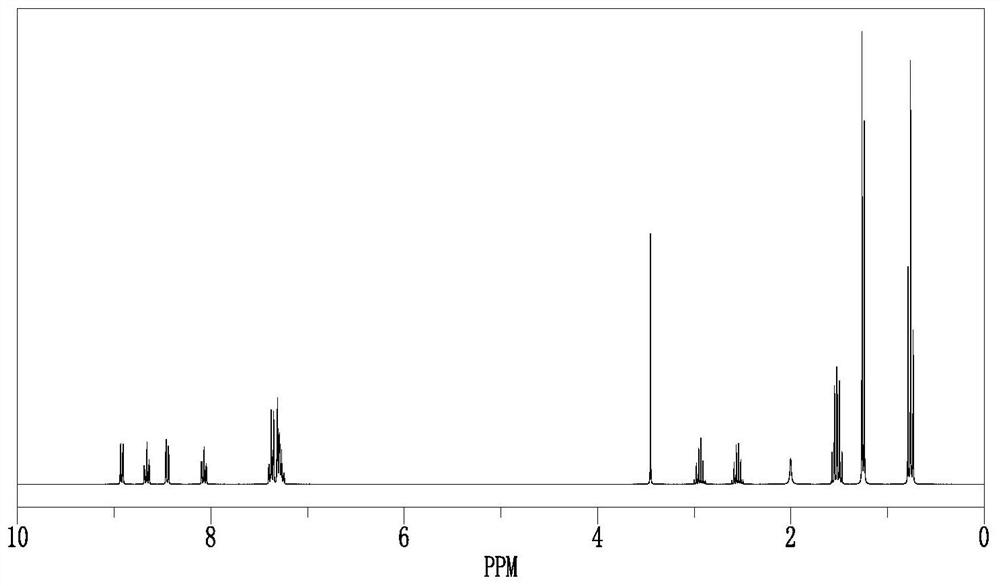Method for removing trace aldehyde group impurities in 1, 3-propylene glycol
A technology for propylene glycol and aldehyde groups, which is applied in the field of removing trace aldehyde group impurities in 1,3-propanediol, can solve problems such as difficulty in large-scale application, and achieve the effects of green process, easy separation and recovery, and obvious process advantages.
- Summary
- Abstract
- Description
- Claims
- Application Information
AI Technical Summary
Problems solved by technology
Method used
Image
Examples
Embodiment 1-13
[0075] Raw material of 1,3-propanediol dehydration concentrate containing trace aldehyde-based impurities: acrolein concentrate obtained after acrolein hydration reaction, deacrolein, then hydrogenation and dehydration concentration, its composition contains 1,3-PDO content 67 %, the water content is 26%, the aldehyde group content is 836ppm, of which MW114 is 550ppm.
[0076] The above-mentioned 1,3-propanediol dehydration concentrate containing trace aldehyde-based impurities was preheated to 40-130°C, pumped into a fixed-bed reactor (D: 2.4 cm, H: 110 cm), and filled in the fixed-bed reactor Polymerized styrylimidazole / pyridinesulfonic acid ionic liquids IM-1-IM-3 and PY-1-PY-3 were used as catalysts, with a loading of about 100g, and the dealdehyde reaction was carried out, and the reaction space velocity was 0.5-5h -1 .
[0077] The 1,3-propanediol after the dealdehyde treatment is subjected to vacuum distillation, the number of plates is 30-50, the temperature of the co...
Embodiment 14-21
[0087] The raw material of the 1,3-propanediol dehydration concentrate containing a trace amount of aldehyde-based impurities is the same as that of Example 1-13.
[0088] Preheat the 1,3-propanediol dehydration concentrate with trace aldehyde impurity to 40-130℃, pump it into a 250mL stirred tank reactor, add polyethylene glycol sulfonic acid imidazolium ionic liquid PEG-1~PEG-4 To the concentration of 0.05-10wt%, carry out dealdehyde reaction, and the reaction time is 1-6h.
[0089] The 1,3-propanediol after dealdehyde treatment is rectified under vacuum, the number of plates is 30-50, the temperature of the column kettle is 121-155°C, the reflux ratio is 1:1-20:1, and the pressure at the top of the column is 0.5-10kPa. The specific operating conditions and treatment effects are shown in Table 2 below.
PUM
 Login to View More
Login to View More Abstract
Description
Claims
Application Information
 Login to View More
Login to View More - R&D
- Intellectual Property
- Life Sciences
- Materials
- Tech Scout
- Unparalleled Data Quality
- Higher Quality Content
- 60% Fewer Hallucinations
Browse by: Latest US Patents, China's latest patents, Technical Efficacy Thesaurus, Application Domain, Technology Topic, Popular Technical Reports.
© 2025 PatSnap. All rights reserved.Legal|Privacy policy|Modern Slavery Act Transparency Statement|Sitemap|About US| Contact US: help@patsnap.com



